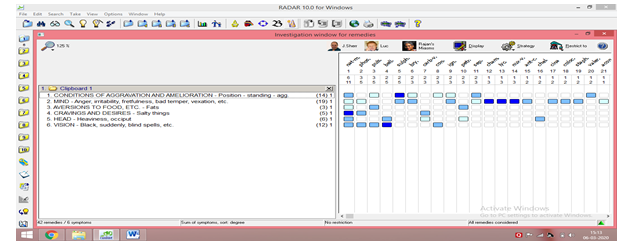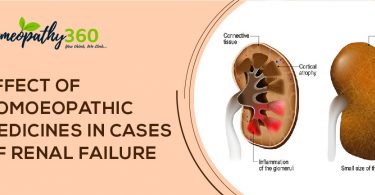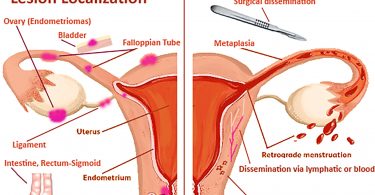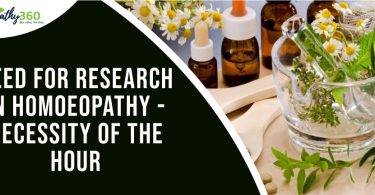
Abstract
A condition in which the force of the blood against the artery walls is too high. Usually hypertension is defined as blood pressure above 140/90 mm Hg and is considered severe if the pressure is above 180/120mm Hg. High blood pressure often has no symptoms. Over time, if untreated, it can cause heart diseases and stroke.
Keywords – HTN, hypertension, homoeopathy, Boger’s Synoptic Key.
Abbreviations – HTN – hypertension, mm – millimetre, Hg – mercury, BP – blood pressure.
Introduction –
Hypertension, also known as high blood pressure is a long term medical condition in which the blood pressure in the arteries gets persistently elevated (1). High blood pressure typically does not cause any symptoms. Long term high blood pressure, however, is a major risk factor for coronary artery disease, stroke, heart failure, atrial fibrillation, peripheral arterial disease, vision loss, chronic kidney disease and dementia (2, 3).
Types –
1. Primary essential hypertension – about 90 to 95 % are primary due to non-specific lifestyle and genetic factors like excess salt in the diet, excess body weight, smoking and alcohol use.
2. Secondary hypertension – remaining 5 to 10% are categorised as secondary high blood pressure due to an identifiable cause, such as chronic kidney disease, narrowing of the kidney arteries, an endocrine disorder or the use of birth control pills (4).
Symptoms –
Hypertension is rarely accompanied by symptoms and its identification is usually through screening, or when seeking healthcare for an unrelated problem. Some people with high blood pressure report headache as well as light headedness, vertigo, tinnitus, altered vision or fainting episodes (5).
Diagnosis –
Hypertension is diagnosed on the basis of a persistently high resting blood pressure. The American Heart Association recommends at least three resting measurements on atleast two separate health care visits5.
Prevention –
Maintain body weight.
Reduce salt intake.
Regular physical activity.
Limit alcohol consumption.
Consume a diet rich in fruit and vegetables5.
Homoeopathic approach –
Homoeopathy operates on the law of similars. Homoeopathy can help high blood pressure, determining its cause through a holistic approach. Homoeopathic treatment is recommended because it not only can lower and stabilise blood pressure, it also has a positive effect on overall health.
Repertorial approach –
Synoptic key of Materia medica by Dr C.M. Boger is, in real sense, a key to homoeopathic materia medica, something which is not only useful in bed side prescription but also in a classical way. This book intends to make the general expression or genius of the remedy, thereby helping the prescriber to correct the manner of his practise. The repertory is too instructive in its own way and many hints can be gathered from its unusual layout. It can also be applied as supplementary reference table.
- Year of publication – 1931
- Number of remedies – 489 ( repertory part)
323 (synopsis part) (6)
Editions –
I edition – 1915.
II edition – 1916.
III edition – 1928.
IV edition – 1931.
Augmented edition – 1935.
Gradation –
1st grade – CAPITAL ROMAN.
2nd grade – bold roman.
3rd grade – ordinary roman.
Plan and construction –
The entire book consists of three parts. They are as follows:
1st part – analysis.
2nd part – synopsis.
3rd part – consists of:
a) Table of approximate duration of action of remedies.
b) Complementary remedies.
c) Antagonistic remedies.
d) Supplementary reference table. (7)
Boger’s evaluation of symptoms/ totality in the Synoptic key of Materia medica is as follows:
- Modalities.
- Mind.
- Sensation.
- Parts affected.
So here also Boger is sticking to his old format of Boger Boenninghausen Characteristics and Repertory, that is, location, sensation, modalities and concomitants. (8)
Case study
A. Introduction
Mr. X of age 54 came with the complaints of on and off vertigo since 5 months. Vertigo occurred especially on standing, with heaviness in the back of the head. He also complained of sudden blackness of vision. On examination, his blood pressure came out to be 180/100 mm hg.
Presenting complaints
| Location | Sensation | Modality | Concomitant |
| Head Occiput | Vertigo Heaviness | < standing up | Sudden blackness of vision |
Past history – Nothing specific.
Family history – Father – Hypertensive.
Physical generals
The patient had desire for salty foods, and aversion to fatty foods.
Mental generals
The patient used to become angry easily and was irritable in nature.
Analysis and evaluation of symptoms
| Mental generalsIntensity (miasm) | Physical generalsIntensity (miasm) | Particulars Intensity (miasm) |
| Irritable++ (psora) (10) Anger++ (psora) (10) | Aversion – fatty foods++ (sycosis) (10) Desires – salty things+++ (tubercular) (10) | Heaviness of occiput+++ (syphilis) (10). Sudden blackness of vision++ (syphilis) (10) < standing up+++ (psora) (10) |
Rubrics 8
| S.No. | Symptoms | Chapter | Rubric | Page number |
| 1. | Irritable, anger | MIND | anger, irritability, fretfulness, bad temper, vexation, etc. | 49 |
| 2. | Desire, salty things | CRAVINGS & DESIRE | salty things. | 74 |
| 3. | Aversion – fatty foods | AVERSIONS TO FOOD, ETC | fats. | 73 |
| 4. | Heaviness in occiput. | HEAD | heaviness, occiput. | 57 |
| 5. | Sudden blackness of vision | VISION | black, suddenly, blind spots, etc. | 61 |
| 6. | < Standing up | CONDITIONS OF AGGRAVATION & AMELIORATION | position – standing- agg. | 27 |

Prescription
Natrum muriaticum 200/1 dose was prescribed ( including symptoms such as heaviness of head, feeling of fainting when raising, sudden darkness of vision, great longing for salt, aversion to fatty foods), 11 followed by placebo (3 – 0 – 3) pills for 15 days.
Potency and dosage – twelfth to thirtieth and higher, in infrequent dosage. 12[Y1]
Follow up
| Date[Y2] | Symptoms | Prescription |
| Patient felt better. There was decrease in the heaviness of the head but vertigo still persisted. BP – 180/100 mm Hg | Natrum muriaticum 200/ 1 dose. ( every correctly chosen homoeopathic medicine, even those whose action is of long duration, may be repeated daily for months with ever increasing success – § 248) 13 Placebo (3- 0 – 3 )[Y3] / 15 days | |
| Patient felt better. 30% improvement. Vertigo persisted. BP – 170/90 mm Hg | Placebo (3-0-3)/ 15 days | |
| Patient felt better. Generals became good. Vertigo presented occasionally. BP – 150/90 mm Hg | Placebo (3-0-3) / 15 days | |
| 4. | Patient felt better. Generals became good. No new complaints. BP- 130/80 mm Hg | Placebo (3-0-3) / 15 days. |
| 5. | Patient felt better. Generals became good. No new complaints. BP – 130/80 mm Hg | Placebo (3-0-3) / 15 days. |
Conclusion
Thus, it is clear thathomoeopathy treats the patient as a whole, not just the disease. Individualisation plays a major role in homoeopathic prescription and Boger’s Synoptic Key helps in finding the individualised simillimum remedy, [Y4] as a quick reference.
References
- Naish.J, Court DS. Medical Sciences, II edition, 2014.
- Mendis S, Puska P, Norrving B. Global atlas on Cardiovascular disease prevention and control, I edition, 2011.
- Lau DH, Nattel S, Kalman JM, Sanders P. Modifiable risk factors and atrial fibrillation, circulation, August 2017.
- Poulter NR, Prabhakaran D, Caulfied M, Lancet. Hypertension, August 2015.
- Fisher ND, Williams GH. Harrison’s principles of internal medicine, 2005.
- Tiwari S.K., Essentials of Repertorization, IV edition, B.Jain Publishers, New Delhi.
- Siju P.V. A reference to repertories for Homoeopathic students, B.Jain Publishers, New Delhi.
- Boger C.M. A Synoptic key of the Materia Medica, revised edition, B.Jain Publishers, New Delhi.
- RADAR software.
- Choudhury H. Indications of Miasm, II edition, 2005, B.Jain Publishers, New Delhi. p. 22, 36, 52, 54, 74.
- Hering C. The Guiding symptoms of our Materia Medica, B.Jain Publishers, New Delhi.
- Boericke W. Boericke’s New manual of Homoeopathic Materia Medica with Repertory, third revised & augmented edition based on ninth edition, B.Jain Publishers, New Delhi.
- Hahnemann S. Organon of Medicine, VI edition, B.Jain Publishers, New Delhi.
[Y1]Justify quoting from reference book.
[Y2]Mention date
[Y3]If you are quoting any abbreviation, quote it above under Abbreviations heading, if it is about after breakfast and its not required.
[Y4]Please read, and correct, as it is used as a quick reference.
About Author:
Dr J.Senthil Kumar, B.H.M.S, M.D (HOM) 1, Dr A. Sumaiyah2
1. Professor, PG Guide, Head of Department, Department of Repertory, Vinayaka Mission’s Homoeopathic Medical College and Hospital, A Constituent college of VMRF-Deemed to be University, Salem, Tamilnadu.
2. Post Graduate Student, Department of Repertory, Vinayaka Mission’s Homoeopathic Medical College and Hospital, A Constituent college of VMRF-Deemed to be University, Salem, Tamilnadu.





